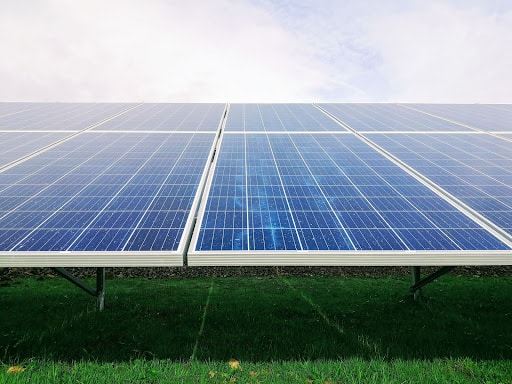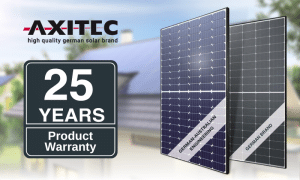Neoen’s Hornsdale Power Reserve can now provide 2,000 Megawatt Seconds (MWs) of equivalent inertia to South Australia’s grid via Tesla’s Virtual Machine Mode technology.
South Australia holds the world’s leading share of wind and solar, with over 64 per cent provided by these renewable sources in the past 12 months.
Located around 16km north of Jamestown in South Australia, Hornsdale will be the first big battery globally to deliver the service at a large scale.
The Australian Energy Market Operator (AEMO) has approved the technology. It took two years of extensive trials, detailed studies, reviews, and analysis for Hornsdale Power Reserve to provide this technology.
With the new technology, solar batteries can stabilise the grid by providing inertia. The company will now be able to provide 15 per cent of the predicted shortfall in the state.
A part of the inertia trials and the expansion of Hornsdale Battery was funded by the South Australian government, ARENA, and the Clean Energy Finance Corporation via a long-term debt facility.
The Significant Role of Inertia
Inertia is crucial to operate a stable grid, especially after major disturbances occur. Before, inertia services were only delivered by gas or coal-fired generators. Due to their rapid retirement, it often causes instability to the grid and inertia shortfalls, especially in South Australia.
The closure of coal and gas plants and the increasing volume of renewables have caused inertia shortfalls in the grid.
Inertia is the energy stored in massive rotating generators or industrial motors. It comes from fossil, nuclear, and hydroelectric power plants via rotating electrical generators. During system failures, inertia provides systems time to respond and rebalance supply demand.

A First for the World
The VMM is a first for the world, and as it expands the capabilities of Hornsdale Power Reserve, it further shows the region’s commitment to global leadership in renewable energy. As a result, this will improve the stability of the grid and the reliability of energy while bringing costs down for all South Australians.
With over 17 years of experience, Energy Matters has extensive experience in the solar industry. We continuously help 40,000 Australian households & businesses gain energy independence
Fill out our quick Solar Quote Quiz to get up to three free solar quotes from trusted local installers.
The Future Plans
In 2020, Hornsdale Power Reserve upgraded its Tesla energy storage units allowing the company to deliver new services, such as virtual inertia or Virtual Machine Mode (VMM).
Elon Musk’s company designed VMM in a way that it can emulate mechanical inertial from traditional electrical generators. Now, these will be replicated at the Wallgrove Battery in NSW, the new Broken Hill battery and the Darlington Point battery projects. Others will be supported by a $100 million grand scheme to be led by the Australian Renewable Energy Agency.
Neoen is developing other big batteries in Australia, such as the 100 MW Capital battery outside Canberra. It is also operating a 300MW and 800MWh battery in Blyth, located in the north of Adelaide.
Overall, Neoen has 576 MW of storage capacity in operation or under construction. The company also disclosed its plans to have at least one large-scale battery in each of the five states that are part of Australia’s National Electricity Market (NEM).

Solving Intermittent Energy Supply
Based on AEMO’s 2020 Integrated System Plan, there is a 63 per cent forecast of coal-fired generation that is set to retire by 2040, which will be replaced by wind and solar farms with up to 19 gigawatts of firming generation.
Therefore, distributed energy generation capacity is predicted to double or triple in the next 20 years. Rooftop solar is expected to deliver up to 22 per cent of total electricity. The increasing growth creates technical challenges for AEMO, regulators and for governments looking for the right policy settings to ensure the grid is stable and viable.
Despite the growth of renewable energy sources, there is still a shortage in the production of electricity. The good news is that battery technology is here to help with renewables to solve intermittent supply issues when it’s not sunny or windy.
Currently, there are five grid-scale batteries with a capacity of 260 MW in South Australia and Victoria. However, based on AEMO’s latest Generation Information report, there are over 85 big batteries with a total capacity of 18,660 MW in the pipeline.
In fact, planning is already taking place for the world’s biggest grid-scale battery in the Hunter Valley, New South Wales (NSW). It is said that it would have a power capacity of up to 1,200 MV, which will be eight times greater than the battery at Hornsdale.
Meanwhile, the Victorian Big Battery is being constructed already with 300 MW/450 MWh that can improve grid security as it delivers extra capacity during peak summer months in the state of Victoria.
With the decreasing production costs of batteries, investors are showing more interest. To add to that, big batteries are versatile, and with today’s new technologies, they continue to overcome the limitations that further enhance their value. When this continues, the batteries may be able to produce power for longer periods.
Additionally, batteries may be built with solar or wind farms or store power from the grid for use when needed. Also, they can supply power to households and help stabilise the grid.
As long as these are placed in strategic locations around the grid, they can deliver power, allowing for a more efficient renewable generation that can serve the growing demand for solar energy.
Smaller-scale batteries can also be installed in homes to provide backup power. However, it can also be used as a collective via a Virtual Power Plant (VPP).
To Sum It Up
The Hornsdale Power Reserve is indeed, revolutionary since it was commissioned back in 2017, and it continues to flourish. This new development paves the way for more large-scale battery storage projects in the country and all over the world.
Indeed, this helps solve Australia’s need for a stronger grid to leverage the benefits of renewable energy and resources.
Energy Matters helps households and businesses save more on energy. If you’re thinking of making the switch, you can use our free electricity bill comparison tool to compare local offers from Australia’s major energy retailers. All you need to get started is a recent energy bill.













































